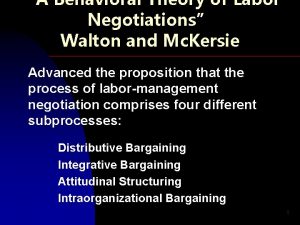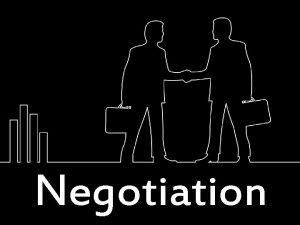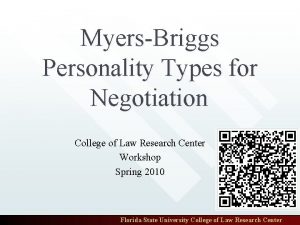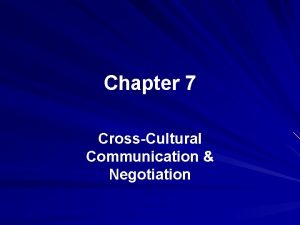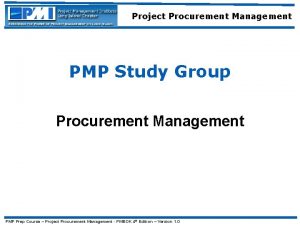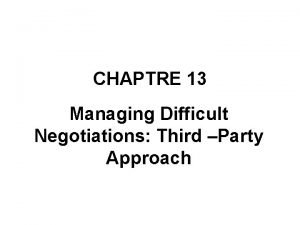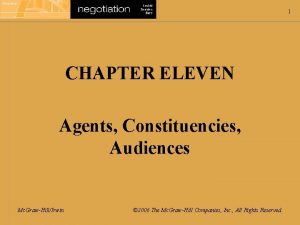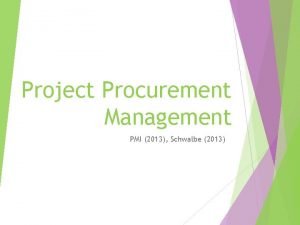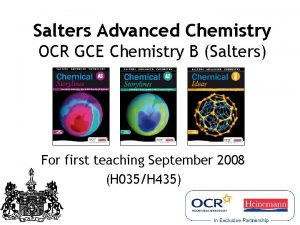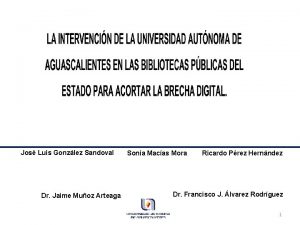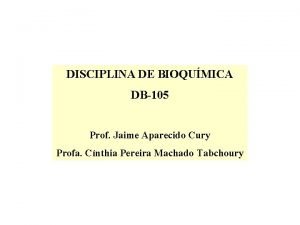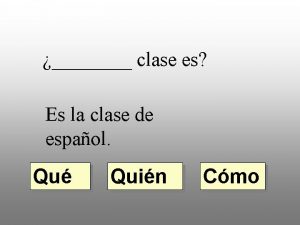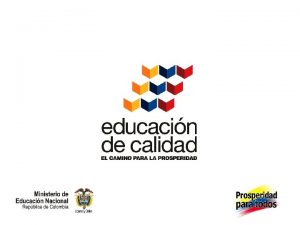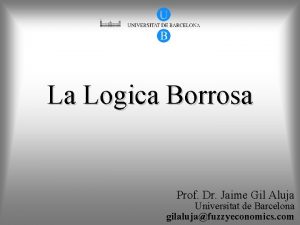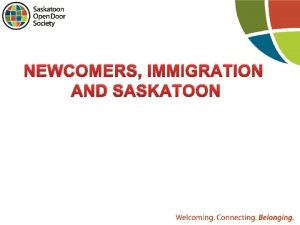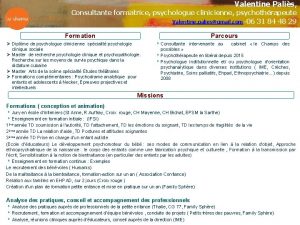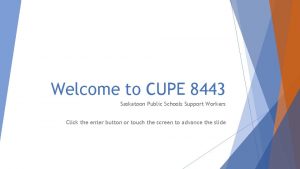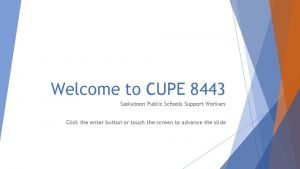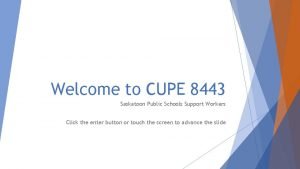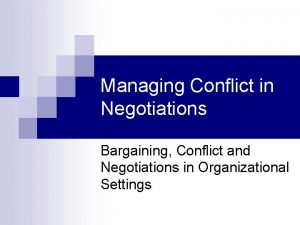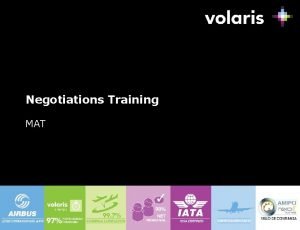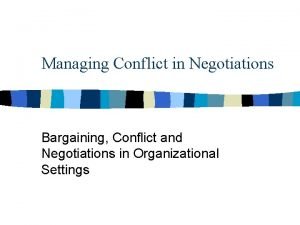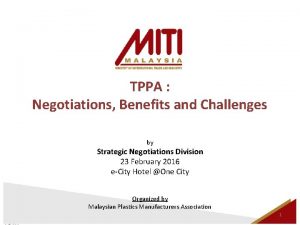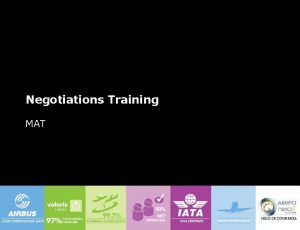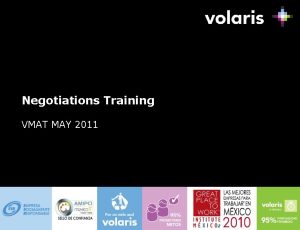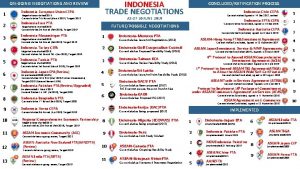Practical Strategies to Support Negotiations Jaime Valentine Saskatoon







































- Slides: 39

Practical Strategies to Support Negotiations Jaime Valentine Saskatoon Public Schools

Agenda • Style – positional versus interest-based negotiations • Process – a four-step model of negotiations • Modeling – William Ury on negotiations • Disposition – discovering our own conflict resolution style Dhaka University Symposium

“Like it or not, you are a negotiator. ” Fisher and Ury, Getting to Yes Dhaka University Symposium

Practical Strategies to Support a Productive and Effective Negotiation Process • Negotiations requires a substantial investment of resources. It’s reasonable to expect bargaining to produce a sustainable agreement – one that provides predictability and stability to all concerned. • Before bargaining begins, consider what success looks like. Assume you are at the end of a successful negotiation – describe the kind of agreement you have achieved, the process that got you there, and the relationships you Dhaka University developed. Symposium

Practical Strategies to Support a Productive and Effective Negotiation Process • Develop broad goals to reflect where you want to finish. • Bargaining involves at least three negotiations: With your constituents (the people you represent) With your bargaining team With the other party Ø Each of these negotiations involves search for agreement – each is critical to the success of your endeavour. Dhaka University Symposium

Practical Strategies to Support a Productive and Effective Negotiation Process • Negotiators need to be attuned to the bargaining climate as they prepare for and engage in collective bargaining. Climate will affect the number and type of issues each party brings to the bargaining table, they way they negotiate, and their ability to achieve and ratify agreements. • As a negotiator consider steps you can take before and during collective bargaining to influence the relationship in a positive way. Dhaka University Symposium

Dhaka University Symposium

Criteria to Judge a Negotiation • Should produce a wise agreement • Should be efficient • Should improve, or at least not damage, the relationship between the parties Dhaka University Symposium

Positional Negotiating • Positional or traditional is basically adversarial and distributive • Each party develops their own proposal package with specific language • During joint sessions, one party’s unilateral demand is presented and then met with a position put forward by the other party – an ongoing exchange commences • What are positions? Our ideal fix or solution to a situation Soft versus Hard positions Dhaka University Symposium

Interest-based Negotiating • Interest- based problem solving is collaborative and integrative in nature • Parties meet jointly and spend time educating the other about their interests and needs on each topic. Leads to joint problem solving. Dhaka University Symposium • What are interests? Our underlying needs, goals, concerns and fears. Motivators behind positions – positions are put forward as unilateral solutions to interests Do not assume that because positions are opposed that interests are opposed Creative and durable agreements will only be reached if both sets of interests are met

Harvard’s Four Principles of IBN • • Separate the people from the problem Focus on Interests, Not Positions Invent Options for Mutual Gain Insist on Using Objective Criteria Dhaka University Symposium

The Stages of Negotiations Pay attention to each stage of the bargaining process - all stages of the bargaining process are important. 1. 2. 3. 4. Preparation Settling In Consolidation Finalization Dhaka University Symposium

Preparation • Although you have your own opinions and interests, you participate in collective bargaining to represent the concerns and interests of others (your constituents) • You need to who your constituents are and what they expect of you Dhaka University Symposium

Preparation Create an Effective Negotiating Team • Create the team with the smallest number of people needed to represent the interests of constituents. • Choose team members based on what they can contribute. Look for a good mix of people with a varied skill set. Have a Vision • Before bargaining begins, consider what success looks like. Assume you are at the end of a successful negotiation – describe the kind of agreement you have achieved, the process that got you there, and the relationships you developed Dhaka University Symposium

Preparation Create Meaningful Bargaining Interests, Not Wish Lists Meaningful Proposals Involve Issues That: • Cannot be resolved outside of negotiations • Are having a significant ‘here and now’ impact. • Have been carefully assessed before being placed on the bargaining table, can be supported with good information, and represent a priority for one or both parties. Dhaka University Symposium

Preparation • Know what your BATNA is (Best Alternative to a Negotiated Agreement) • What are the alternatives if you do not reach an agreement? What is the impact on your constituents? How does it affect your ongoing relationship? Helps you develop your ‘bottom line’ and know when to walk from the table Dhaka University Symposium

Settling In • Negotiate the ‘rules of engagement’ before you begin Are you engaged in positional or interest-based bargaining? • What procedures and ground rules do you need: To maintain a supportive climate for negotiations? To make meetings as efficient and effective as possible? To achieve good outcomes? To maintain or strengthen relations between the parties? • Often known as the ‘feel good’ portion of negotiations Dhaka University Symposium

Settling In • Many negotiators view the exchange of proposals as the official start of collective bargaining (despite weeks of preparation) Begin by describing broad goals and priorities. Express hopes for the negotiation. Be positive while acknowledging the challenges. Encourage members of the other team to ask questions. Confirm that the proposals tabled by both parties constitute the complete package of proposals to be considered in bargaining, and that no additional issues Dhaka University Symposium will be tabled except by mutual agreement.

Settling In to Consolidation • Seek consensus on an order of proceeding that provides balance and flow to the bargaining process, taking into consideration: The relative urgency of the issue Opportunities to achieve ‘quick successes’ Whether an issue can be addressed on a ‘stand-alone’ basis or is closely linked to other issues. Whether an issue requires further fact finding or additional research. Dhaka University Symposium Issues with significant monetary implications are usually left to the latter stages of bargaining.

Consolidation • This is the longest – and often most frustrating – portion of negotiations • Regardless of type of bargaining, make sure that every bargaining issue is clearly defined and understood by all participants before talking about how to solve it. • Find out what is motivating one or both parties to bring the issue to the bargaining table (interests) • Move directly to solutions for ‘update’ issues. • On matters of substance… ‘The key is to find out why they want what they want. ’ Dhaka University Symposium • Be curious. Don’t assume you know what is motivating the other party.

Consolidation - Tactics • Be sincere and genuine about your interests. Overstating your concerns (or making them up as you go along) will destroy your credibility. • Demonstrate ‘firm flexibility’ – be firm about what it is you are trying to achieve (interests) while remaining flexible about how to achieve it (possible solutions). • Keep returning to your interests (and theirs) as you work through various options or solutions. Dhaka University Symposium

Practical Strategies to Support a Productive and Effective Bargaining Process • Negotiating hard for your interest does not mean being closed to the other side’s point of view. Quite the contrary. You can hardly expect the other side to listen to your interests and discuss the option you suggest if you don’t take their interests into account and show yourself to be open to their suggestions Dhaka University Symposium

Consolidation to Finalization • Look for common ground and make it bigger. • Use inclusive language – focus on the ‘we’ and less on the ‘you’. • Listen for ‘hot-button’ expressions and re-frame them in less emotional terms. • Challenge broad generalizations of people or situations. • Keep probing for interests. Keep peeling the onion until you discover shared interests. • Create a shared goal that blends the key interests of both parties. • Suggest a pilot project or a trial period if a permanent change is too significant or far-reaching. • When you achieve a good agreement, look for ways to make it better. Dhaka University Symposium

Practical Strategies to Support a Productive and Effective Bargaining Process • Be willing to talk about the problem, even if the solution they have in mind is a ‘non-starter’. • Seek consensus on objective comparators. The chances of agreement improve when parties find common ground on fair and reasonable bench marks. • Share information on the cost to each monetary proposal. • Consider alternatives around timing or staging of monetary or other key proposals. • Don’t give up, at least until you have thoroughly considered your BATNA’s (Best Alternative To a Negotiated Agreement) and the implications of breaking off negotiations. Dhaka University Symposium

Finalization • • Keep track of where you are at with each issue Agree in principle first Sign off language as you go Insist on plain language – ensure it is clearly understood by all • Prepare a final memorandum to take back to constituents (if necessary) and sign it before leaving the table • Agree on a communication process • Ratification vote Dhaka University Symposium

For Reflection and Consideration • How do parties prepare for negotiations and the stages of the negotiations process (settling in, consolidation, finalization, ) • Might it be fair to say that the pre-planning and groundwork put in prior to the start of negotiations has a major impact on its outcomes? Dhaka University Symposium

Other Points to Consider • What images come to mind when we think about the ‘traditional bargainer’ and the ‘interest-based bargainer’ • If you have had the opportunity to be a part of a collective bargaining process what was the method used - traditional or interest-based? • Other than at the bargaining table – when else might you use bargaining skills? Dhaka University Symposium

Getting to Yes – William Ury • https: //www. ted. com/talks/william_ury Key Concepts • Find the 18 th Camel • The Third Side • Go to the Balcony • Walk the Abraham Path Dhaka University Symposium

Break

Conflict Resolution Strategies

In Conflict Resolution…. • It is essential to plan with a positive attitude and consider the source of conflict • Seeking an understanding of the source of the conflict is basic to its resolution

Sources of Conflict • Communication: misunderstandings, insufficiency of information, assumptions, differences of perception, uncertainty • Structural: ineffective processes; time constraints; unmet expectations • Interpersonal: stereotypes (including cultural); distorted perceptions; unmet expectations; fear • Interest: perception of incompatibility of needs and interests; differences in emotional and intellectual needs • Value-based: opposing beliefs, values or philosophies – often the most difficult to resolve

Individual Conflict Styles • First step in conflict resolution is to understand your own conflict style • Thomas-Kilmann Conflict Mode Instrument




FORCING COLLABORATING Shark High Assertiveness/Low Affirmation Owl High Assertiveness/High Affirmation High Value On Issue Compromising Low Value on Relationship Fox Med. Assert/Med Aff High Value on Relationship Low Value On Issue AVOIDING Turtle Low Assertiveness/Low Affirmation ACCOMMODATING Teddy Bear Low Assertiveness/High Affirmation

Table Work • What are the benefits of our conflict resolution style? • What are the costs? • When might this conflict management style be most appropriate in my current leadership role?

Thank you and best of luck with your next negotiation! Dhaka University Symposium
 Ggp saskatoon
Ggp saskatoon Ecojustice saskatoon
Ecojustice saskatoon A behavioral theory of labor negotiations
A behavioral theory of labor negotiations Benefits of negotiation
Benefits of negotiation Sensors vs intuitives
Sensors vs intuitives How to expand the pie in negotiation
How to expand the pie in negotiation Cross cultural communication in business negotiations
Cross cultural communication in business negotiations Procurement project management
Procurement project management Managing difficult negotiations
Managing difficult negotiations How agents, constituents and audiences change negotiations?
How agents, constituents and audiences change negotiations? Pmi procurement
Pmi procurement Practical strategies to prevent bullying
Practical strategies to prevent bullying Ccea gce chemistry practical support
Ccea gce chemistry practical support Ccea gce chemistry practical support
Ccea gce chemistry practical support Practical network support for ip traceback
Practical network support for ip traceback Major vs minor details
Major vs minor details Dr jaime luis gonzalez
Dr jaime luis gonzalez Uuu
Uuu Sammy jaime pack
Sammy jaime pack A mi me gusta a mi me encanta dios
A mi me gusta a mi me encanta dios Carlos jaime taborda tamayo
Carlos jaime taborda tamayo Jaime aparecido cury
Jaime aparecido cury Dr jaime soriano
Dr jaime soriano Youtube com
Youtube com Tú ____ en la clase de jaime, ¿verdad?
Tú ____ en la clase de jaime, ¿verdad? Jamie markham unc
Jamie markham unc Relationship between temperature and latitude
Relationship between temperature and latitude Citicorp investment services
Citicorp investment services Jaime sendra grimau
Jaime sendra grimau Jaime andres castaño actor
Jaime andres castaño actor Verbos subordinados
Verbos subordinados Jaime villamarin
Jaime villamarin Jaime gil aluja
Jaime gil aluja Lina crisqui
Lina crisqui Jaime gascon
Jaime gascon Jaime antonio gonzalez colson paintings
Jaime antonio gonzalez colson paintings Dr jaime schehr
Dr jaime schehr Jaime franco bejarano
Jaime franco bejarano Dr. jaime cepeda
Dr. jaime cepeda Dr gloria domingo
Dr gloria domingo


